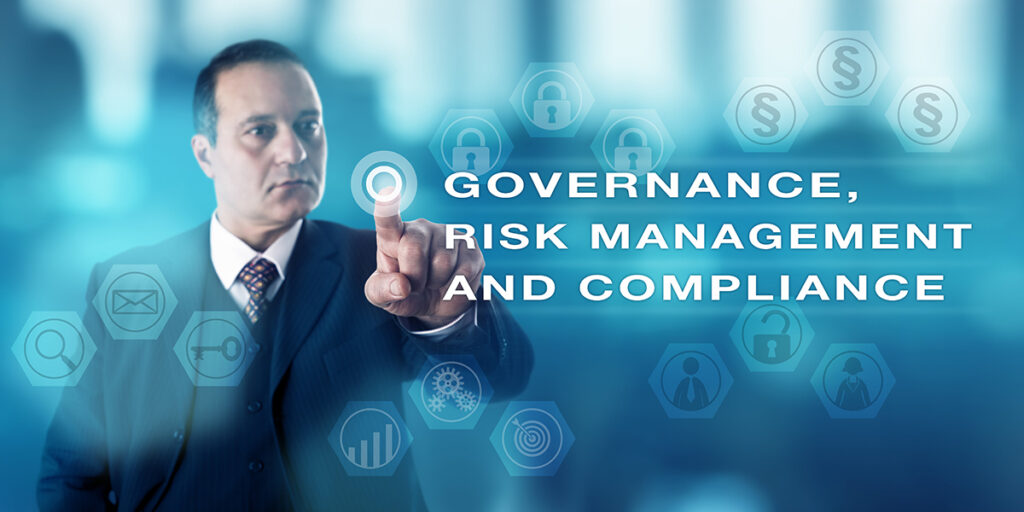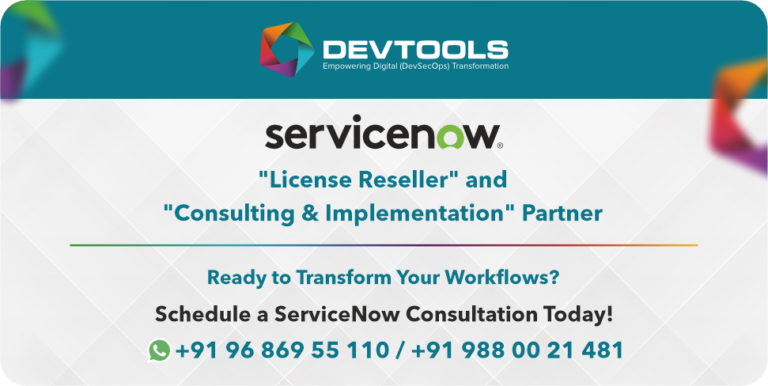Governance, Risk and Compliance (GRC) Software: A Complete Guide

Organizations encounter a complex combination of operational risks, cybersecurity threats, and regulatory requirements as they digitize and operate in global markets. Software for Governance, Risk, and Compliance (GRC) is crucial in this environment. A strong GRC program aids businesses in proactively managing risk, keeping stakeholders’ trust, and coordinating business procedures with regulatory requirements. This guide examines the fundamentals of GRC, the advantages of contemporary software, and the factors that influence top businesses to select ServiceNow’s integrated risk management suite.
What is Governance, Risk, and Compliance (GRC)?
GRC refers to the methodical process that an organization employs to guarantee that its operations are in compliance with internal regulations, legal requirements, and ethical standards. The systems and procedures that guide business operations are referred to as governance. Identifying possible operational, strategic, or security-related threats and taking action to lessen them are all part of risk management. Compliance guarantees that laws, industry norms, and internal policies are followed. When combined, these three fields offer supervision and a comprehensive understanding of governance risk and compliance throughout the company.
What are the core principles of GRC (Governance, Risk, and Compliance)?
Governance
Corporate governance describes how leaders set goals, assign tasks, and hold people accountable. Transparency and moral decision-making are promoted by effective governance, which makes roles clear for executives, boards, and business units. Additionally, it aligns the organization’s strategy with the expectations of stakeholders and legal requirements. In actuality, this entails putting in place rules, internal controls, and reporting structures that support agility and regulate behavior.
Risk management
The methodical process of recognizing, evaluating, and reacting to possible threats is known as risk management. It includes strategic risks like shifting market conditions, operational risks like supply-chain disruptions, and security risks like cyberattacks. A good risk management program creates mitigation plans, assesses the impact and likelihood of possible events, and keeps an eye on how well controls are working. ServiceNow’s GRC suite allows stakeholders to visualize dependencies and prioritize corrective actions by combining risk data from various parts of the organization into a single platform.
Compliance
Compliance guarantees that the company complies with all applicable laws, rules, and industry standards. Regulations like financial reporting (SOX) and data protection (GDPR, HIPAA) are always changing. To enable compliance teams to react swiftly to evolving requirements, modern GRC software automates control testing, gathers evidence, and produces audit-ready reports. While advanced analytics offer real-time insight into compliance status, policy management modules assist in creating, publishing, and version-controlling internal rules.

Why is GRC (Governance, Risk, and Compliance) Important?
Ineffective risk and compliance management can result in expensive fines, harm to one’s reputation, and inefficiencies in operations.
A unified GRC strategy:
- Protects brand and value: Organizations can prevent crises that could damage their reputation or financial performance by conducting proactive risk assessments.
- Streamlines compliance processes: The manual burden of audits and regulatory reporting is lessened by automated workflows, freeing up employees to engage in value-creating tasks.
- Enhances decision-making: Executives can make data-driven decisions thanks to real-time dashboards that offer a comprehensive view of governance risk and compliance.
- Promotes operational resilience: Enhances operational resilience by ensuring that business processes can tolerate interruptions and continue to provide essential services through integrated risk and continuity planning.
Also Read: ServiceNow IT Operations Management (ITOM): Optimizing IT Performance
What are the use cases of GRC (Governance, Risk, and Compliance)?
- Policy and compliance management: Principal applications of GRC software for compliance and policy management. Streamline audits, monitor regulatory changes, and automate policy lifecycle management.
- Risk management: Identifying, evaluating, and tracking risks across business units is known as risk management. Prioritize treatment plans using risk scoring.
- Audit management: Plan audits, delegate work, and monitor corrective actions. Time spent preparing audits is decreased by automated evidence collection.
- Operational resilience: It involves testing recovery procedures, creating continuity plans, and identifying critical services through business impact analyses (BIA).
- Third-party risk: Assess and keep an eye on partners and suppliers to make sure they adhere to your company’s security and compliance requirements.
What are the key benefits of using GRC software?
There are several benefits to using a single, integrated GRC solution as opposed to spreadsheets or different tools:
- Single platform for all GRC activities: One platform for all GRC operations. Policy, risk, and compliance procedures are all combined into a single AI-powered platform by ServiceNow’s solution. Data moves between apps with ease, breaking down silos and facilitating cross-functional cooperation.
- Actionable insights: Workspaces and dashboards offer real-time insight into compliance posture and risk. Analytics and AI aid in task prioritization and the identification of new problems.
- Workflow automation: Automated issue resolution, control testing, and remediation tracking minimize manual labor and guarantee uniformity throughout the company.
- Improved business resilience: Enhanced operational resilience and customer trust are achieved through the use of Integrated Business Continuity Management (BCM) capabilities, which enable organizations to prepare for, respond to, and recover from disruptions.
- Decreased complexity and cost: Standardizing GRC procedures across departments improves audit readiness, reduces overhead, and helps prevent fines and penalties.

GRC Strategy and Implementation
Adopting GRC software necessitates a thorough plan; it is not just a technological choice. Establish clear governance frameworks first, then list the important parties involved in risk and compliance. Next, evaluate existing systems and processes by conducting a gap analysis. Determine which controls are required by mapping risks and regulatory requirements to your business processes. Select a GRC platform that meets your needs after the strategy has been established. For instance, modules for policy and compliance management, risk management, audit management, and operational resilience are available in ServiceNow’s integrated risk management suite.
Phased implementation is the best course of action. Start with high-priority areas, like third-party risk or regulatory compliance, and then progressively add operational resilience and audit management. To guarantee end-user adoption, apply change management techniques. Integrating GRC into everyday operations requires effective communication and training.
Also Read: ServiceNow Change Management: Features, Benefits and Best Practices
Challenges in GRC implementation
- Organizational silos: When departments function independently, redundant procedures and inconsistent data may result. Silos can be broken down with the aid of a single platform and data model, but cooperation must be promoted by leadership.
- Data quality and integration: Intricate regulatory frameworks. Laws change quickly and differ by industry and region. Tracking changes can be made easier with automation and integrated regulatory content libraries.
- Data integration and quality: Manual procedures and legacy systems generate dispersed data. Reliable insights depend on ensuring data accuracy and integrating the new platform with current tools.
- Adoption by users: Workers may object to new procedures. To promote adoption, highlight the advantages, such as fewer manual tasks and better visibility, and offer training.
Leading GRC solution – ServiceNow GRC
Although there are many GRC vendors, very few provide a fully integrated experience. Take scalability, integration potential, and usability into account when assessing solutions. The GRC platform from ServiceNow leads the market because it:
- Connects to the ServiceNow AI Platform: Every application uses the same data model, which makes data more accurate and less complicated.
- Offers comprehensive modules: ServiceNow provides end-to-end coverage through its extensive modules, which include integrated risk management, policy and compliance, audit management, operational resilience, privacy management, and third-party risk management.
- Makes use of AI and automation: Workflow automation promotes efficiency, while AI-driven insights aid in risk prioritization and control testing automation.
- Scales across industries: ServiceNow is used by businesses of all sizes and industries to improve resilience, manage risks, and comply with regulations.
Conclusion
For modern businesses, risk, compliance, and effective governance are non-negotiable. Organizations can improve operational resilience, streamline procedures, and obtain a comprehensive understanding of risk and compliance by implementing a unified GRC platform such as ServiceNow. A unified platform facilitates proactive risk management, accountability across business units, and alignment of business operations with regulatory requirements. Adopt integrated risk management to safeguard your company, increase stakeholder confidence, and spur long-term growth.
FAQs
What is a GRC?
An organized method for coordinating governance, risk, and compliance activities throughout an organization is called a GRC framework. It consists of roles, tools, policies, and procedures for risk management, compliance, and corporate behavior.
What is the best GRC software?
ServiceNow provides dashboards to visualize risk levels, automates assessments, and aggregates risk data. Integrated modules, such as third-party risk and business continuity management, assist in assigning owners, tracking remediation, and prioritizing actions.
What are the benefits of GRC software?
Separate tool use results in inconsistent reporting, redundant work, and data silos. In the end, a single platform lowers costs and enhances decision-making by combining data, automating processes, and offering a consistent user experience.




